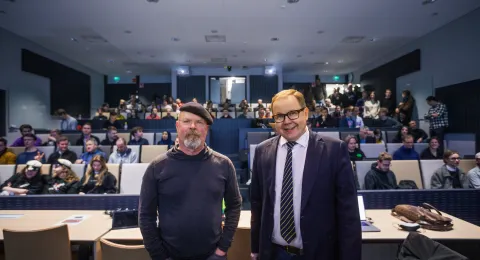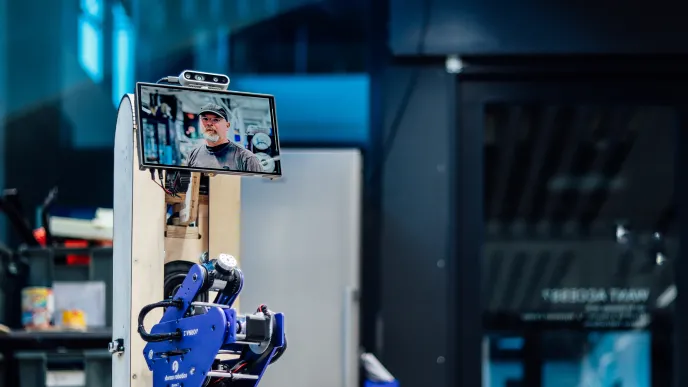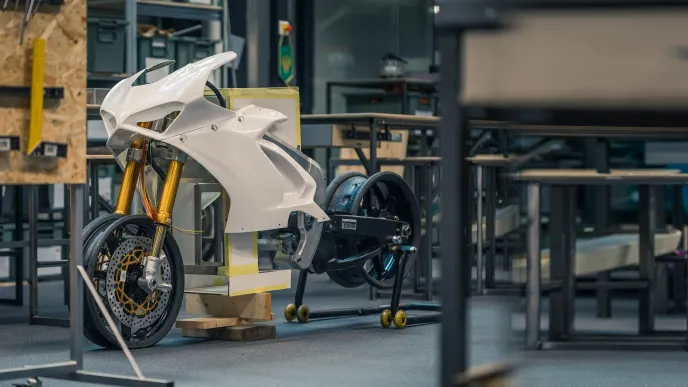There's a lot of buzz around this table. Arvo Alanko is one of the curious visitors viewing a prototype developed for cleaning solar panels. Alanko is a LUT student and an employee of Sons of Solar, a solar panel supplier.
"The rails are used to build a track around solar panels, and our device connected to the power supply wipes off pollen, street dust and other dirt from the panels. The device is intended as a permanent procurement for a household that uses solar panels. The device can be programmed to function just at night time," says Atte Ruokonen from the team of students who developed the prototype.
"The piece moving on the rails is coated with something like microfibre cloths and the idea is for no water to be needed for cleaning," Ruokonen continues.
Arvo Alanko realises that the device could be developed even further.
"It could sweep the snow off the solar panels on the roof of a building. This would make it possible to utilise solar power more efficiently even during Finland's winter," says Alanko.
Sons of Solar is a Turku-based company that is expanding its operations to Lappeenranta during the spring. The utilisation of solar power is still relatively modest in Finland, but Alanko and Ruokonen agree that the panel cleaner could well increase energy output.
"When the solar panel becomes dirty, its power output drops," Ruokonen says.
The next exhibit contains a handy-sounding aid for everyday life, the GreenChariot, an electronic shopping cart . The battery-powered cart can hold a load of approximately 35 kilos when made of the suitable materials. Shopping bags can be hung on the hook row at the top of the cart. The cart can be folded up when not in use.
"When designing the cart we kept the ageing population and people with reduced mobility in mind. An electronic shopping cart can bring a sense of freedom, giving you the opportunity to shop independently. Our cart is also a good alternative for driving to the store," says Project Manager Aino Syväniemi.
According to Syväniemi, the electric cart battery is so efficient that when the gas pedal is pressed down, you can jog with the cart. The cart doesn’t have brakes yet. However, the idea is that the device can be used at a walking pace and it can carry heavy shopping all the way home.
Solar panel cleaning system:
Atte Ruokonen
Sauli Pyrhönen
Jesse Viljakainen
Eetu Huunonen
Arttu Asikainen
Jyri Karjalainen
Noora Savolainen
Topias Pökkönen
Tuomas Riipinen
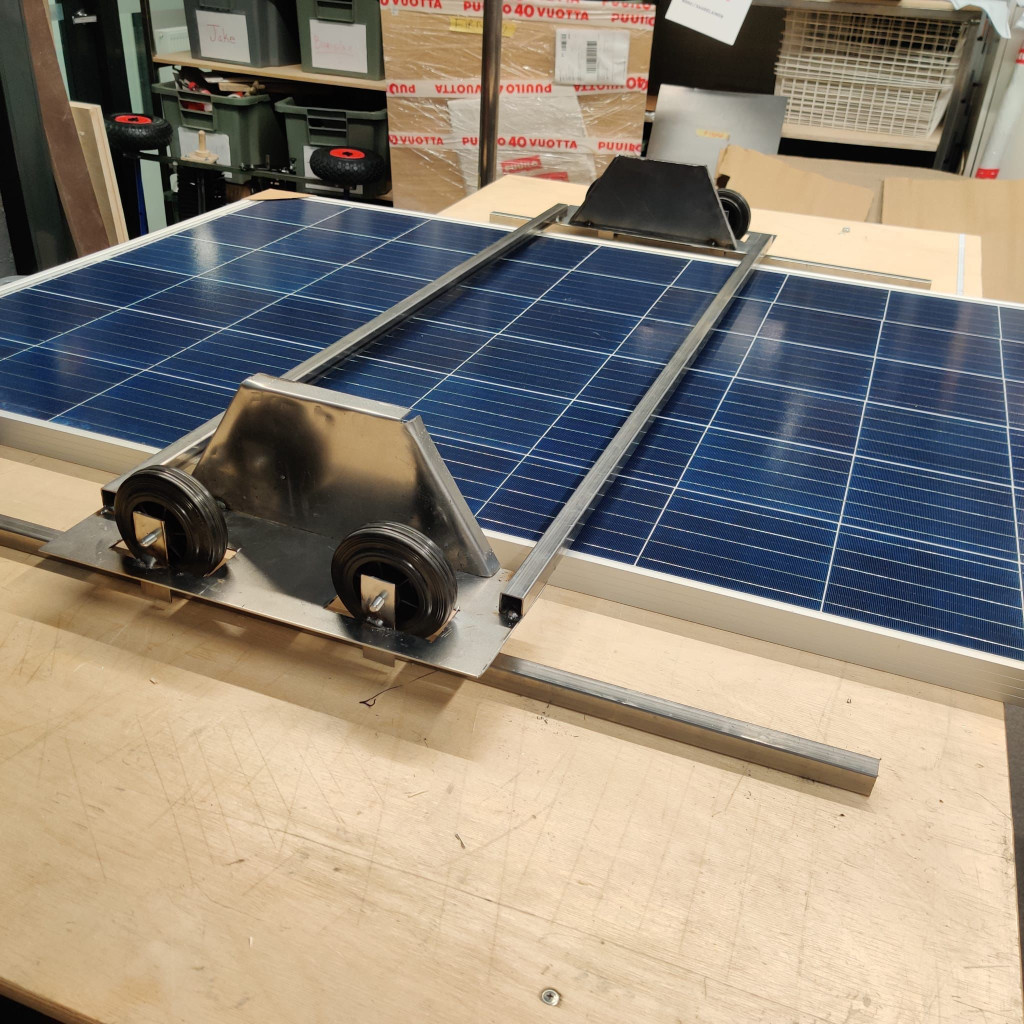
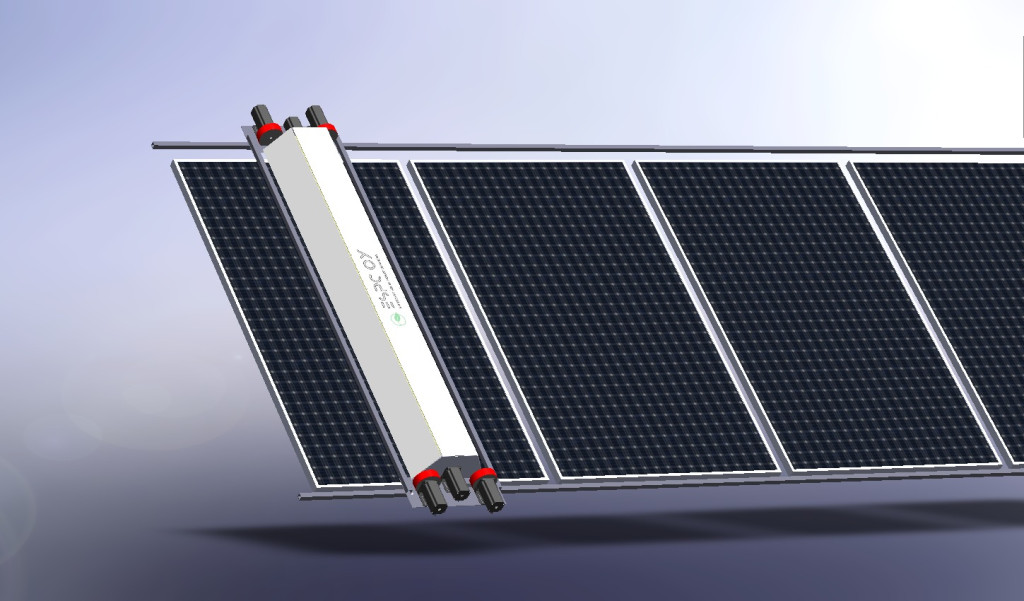
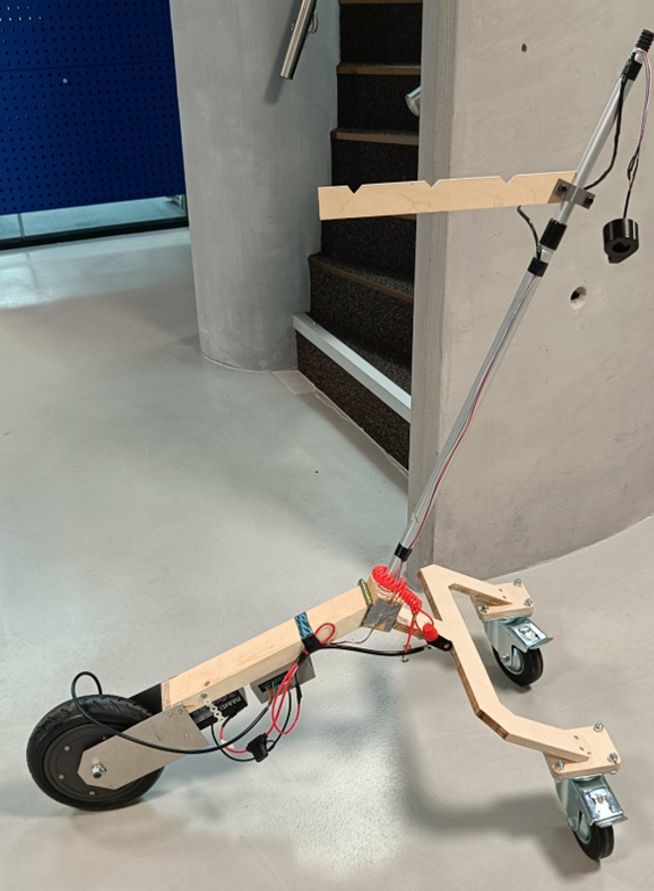
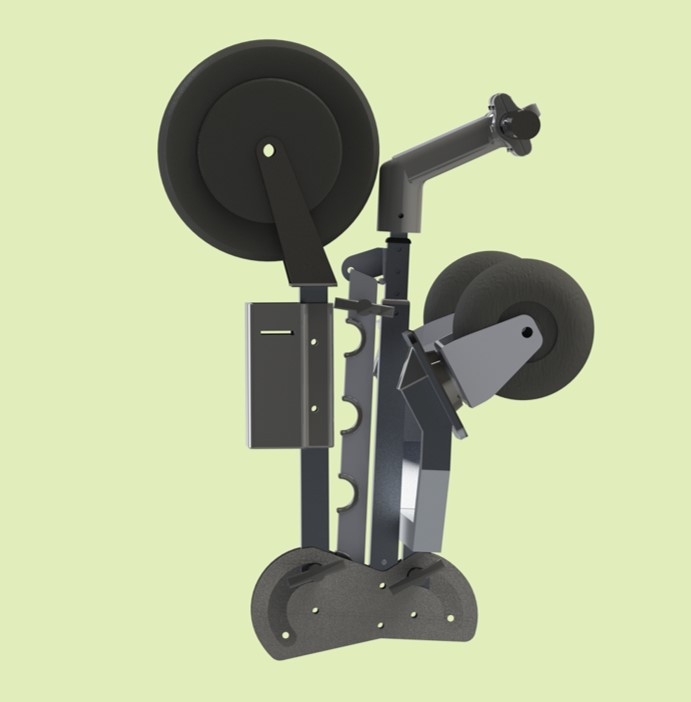
GreenChariot:
Aino Syväniemi
Eetu Sukanen
Hanna Kuru
Bogdan Locovei
Eeva Ruuska
Aleksi Rikkonen
Tommi Romppanen
Markus Ruotsalainen
Johannes Reijonen
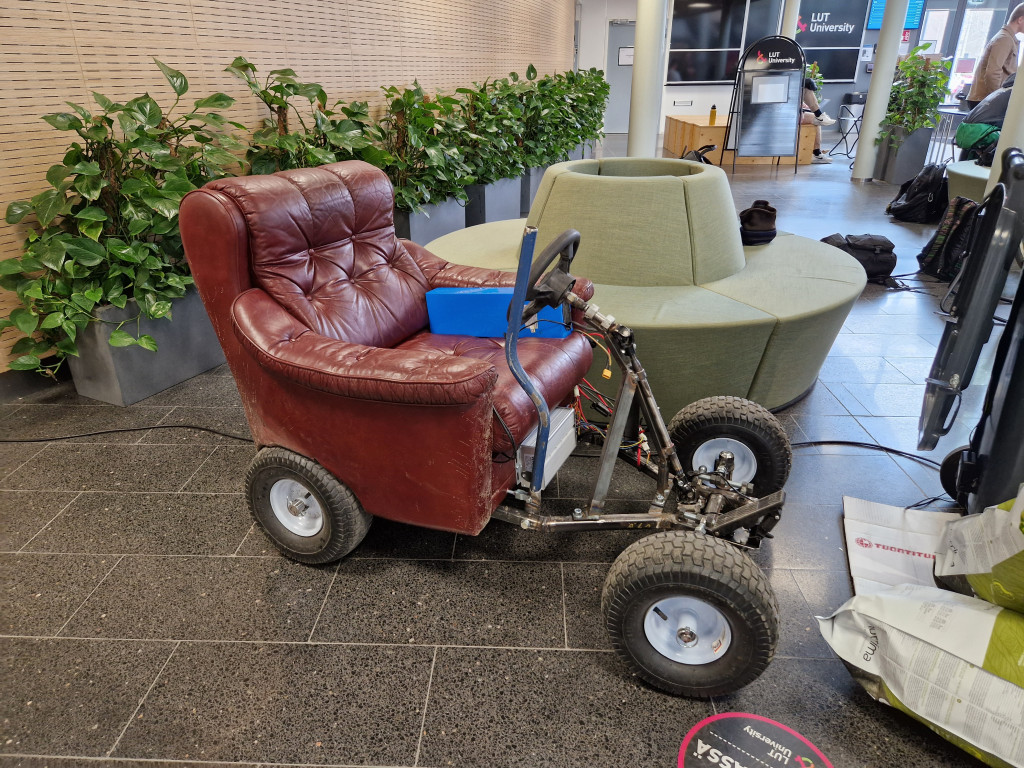
The right balance of humour and utility
The JHC Spring Seminar is showcasing a record number of prototypes this year, a total of 39.
JHC (the J. Hyneman Center) located on LUT's Lappeenranta campus will celebrate its fifth anniversary in autumn 2023. The annual spring seminar is a culmination of prototype workshop’s activities where students can exhibit their course assignments. The spring seminar has attracted hundreds of visitors, including partners such as representatives from Heureka, the Finnish Science Centre.
JHC Project Manager Terhi Virkki-Hatakka says waste presses seem to be a hit prototype this spring, there are several of them. Student projects also include a leaf shredder that collects leaves independently, a blue-green algae collector, a biowaste scale and portable energy sources.
Humour is never far off when engineers are at work. One student team has equipped a handsome, old leather armchair with wheels and an electric motor. The armchair has been seen moving along the university’s corridors. Another team has developed a portable speaker capable of making popcorn.
Virkki-Hatakka is delighted to notice that art has also been made in the JHC premises. A student has burned a picture on plywood of his father on the back of an old motorcycle.
"I would like to see more artists in the JHC protolab. We facilitate the creation of much more than just technical devices. Imagination is the limit," she says.
Failure is part of the process
Jamie Hyneman, after whom the JHC is named, a well-known inventor and Professor of Practice at LUT, strolls around the prototype exhibition in LUT's main lobby and gets stopped again and again. Hyneman, who calls Finland his second home country, is constantly asked for selfies with students.
Just before this, Hyneman filled a lecture hall full with his lecture entitled From idea to innovation, during which he spoke about several of his inventions and their implementation.
Hyneman prefers to make a device prototype from wood or other affordable materials, a method that is also utilised daily at the JHC protolab. He says it is kind of like sketching artwork or design before painting it or building it. It allows you to make mistakes quickly and correct them before doing a more time consuming process.
LUT's Associate Professor Markku Ikävalko, who calls himself the grandfather of the JHC protolab, describes Hyneman's work method as very systematic.
"Jamie is tireless. He thinks for a living. Jamie always thinks up many alternative implementation methods, tests them and learns from the solutions he found. He tends to say that if there are no failures during a project, the project has failed," says Ikävalko.
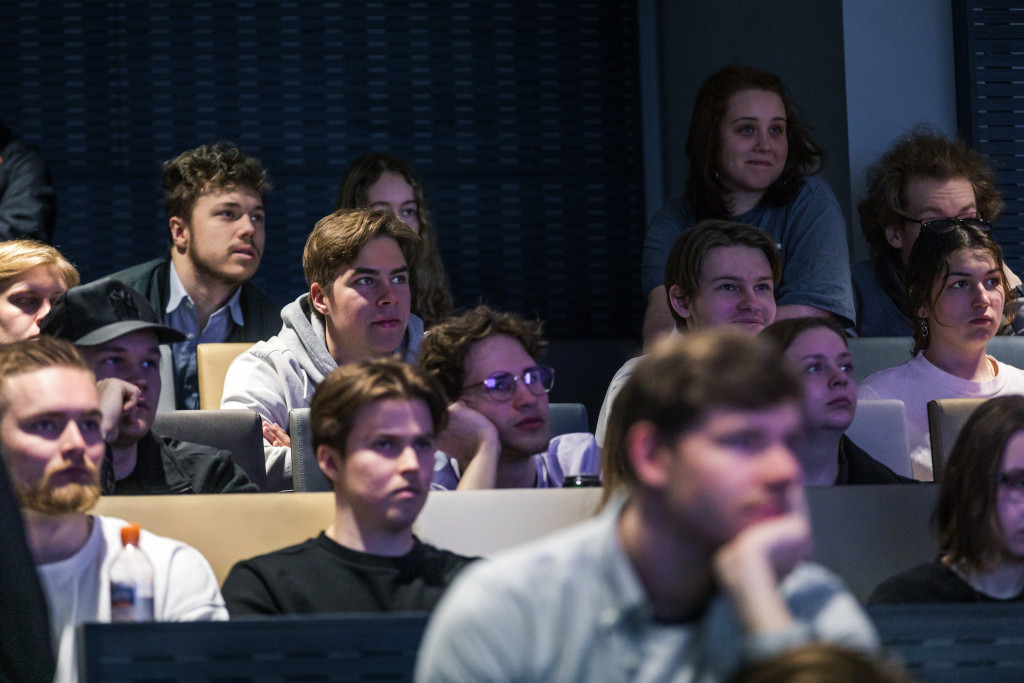
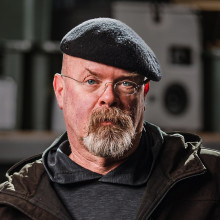
Hyneman would like the LUT protolab and its equipment to give students the feeling that anything is possible. With practice, their experience should be ‘I had the idea, and then I had the thing. Wow!’.
"One of the key advantages of LUT is that engineers, economists and social scientists can work together without unnecessary boundaries. It’s worth remembering that the future of the environment is also strongly linked to socio-economic problems, such as income differences between different countries, and cross-disciplinary cooperation is needed to solve these issues," Hyneman says.
According to Hyneman, an idea is kind of pointless if it remains unused. It's not enough to have a good idea or a good product, you also need to know how to market it to people.
"Commercial knowledge is essential here. It is excellent that JHC operates as part of the LUT Business School."
Hyneman says that, according to all reason, at this stage of his career he should be able to recognise a good invention when he sees one.
“But when a student comes in and says no, I ‘m going to do it this way, whereas I would have done it completely differently, both of us needs to be able to explain why our way is better, and that is the best part, because if you aren’t able to defend it, you aren’t going to be able to sell it.”
According to Hyneman, experience definitely adds certainty for the design process. Hyneman gives an example from his youth from a time when he worked as a cook at a restaurant on the East Coast of the United States during a busy night.
"We were young guys, running about like crazy and struggling to keep up with the orders. The restaurant owner, an older gentleman, stepped in to give us a break, and produced the same food we were, by himself, in only a fraction of the time we spent. When I’d look over at him he’d just be standing there grinning slyly and twirling his spatula.”
Hyneman visits Finland once or twice a year and usually stays for a couple of weeks. Hyneman has taken one piece of Finland back with him to his home in the United States, a Harvia sauna stove – his wife needed a sauna to warm up after swimming in a river. However, the sauna he ordered was not exactly the kind he would have liked.
"It’s a good thing I can build all kinds of things, so I DIY’ed a bit and finished it off nicely," Hyneman laughs.
More information:
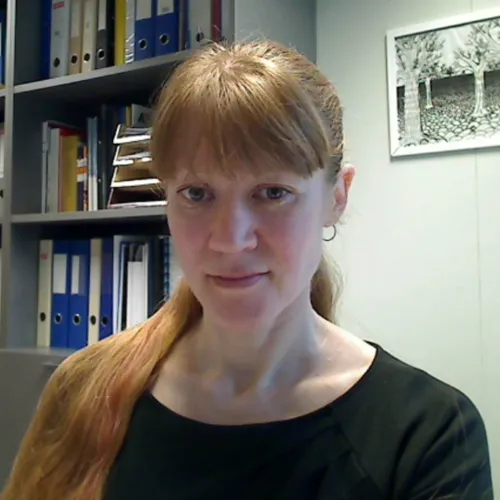
Terhi Virkki-Hatakka


